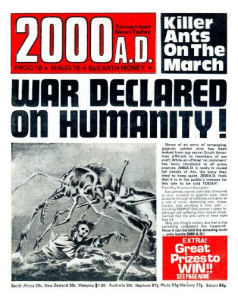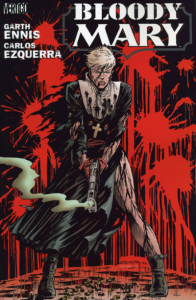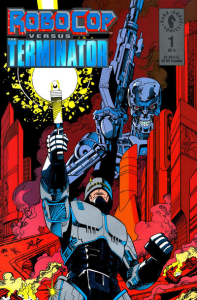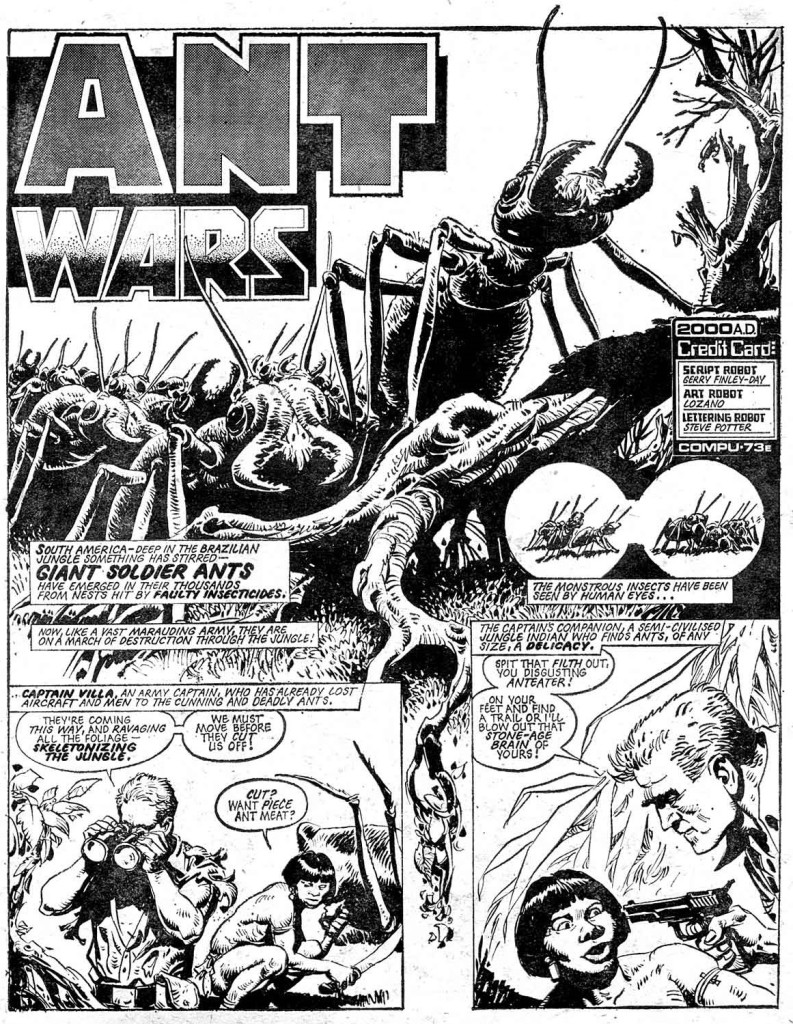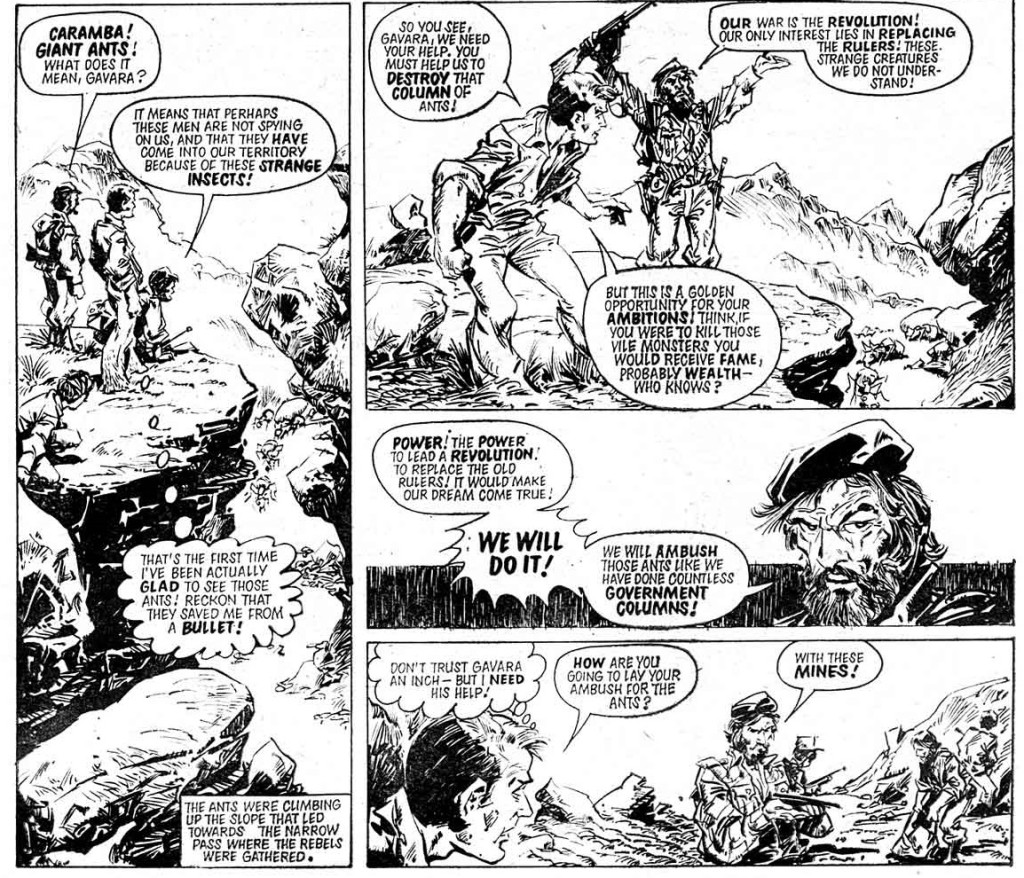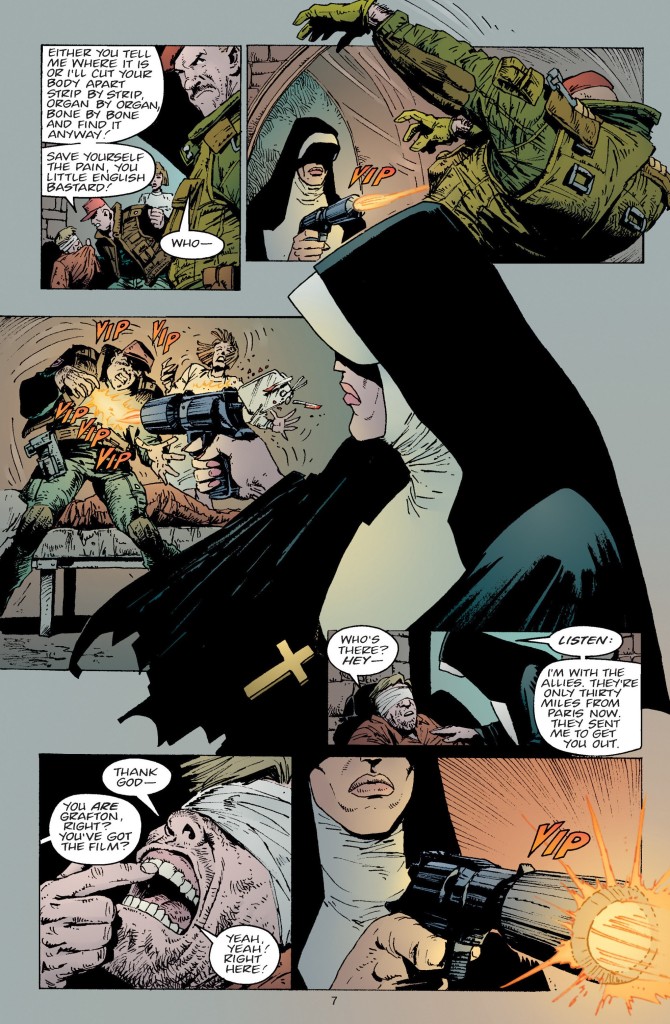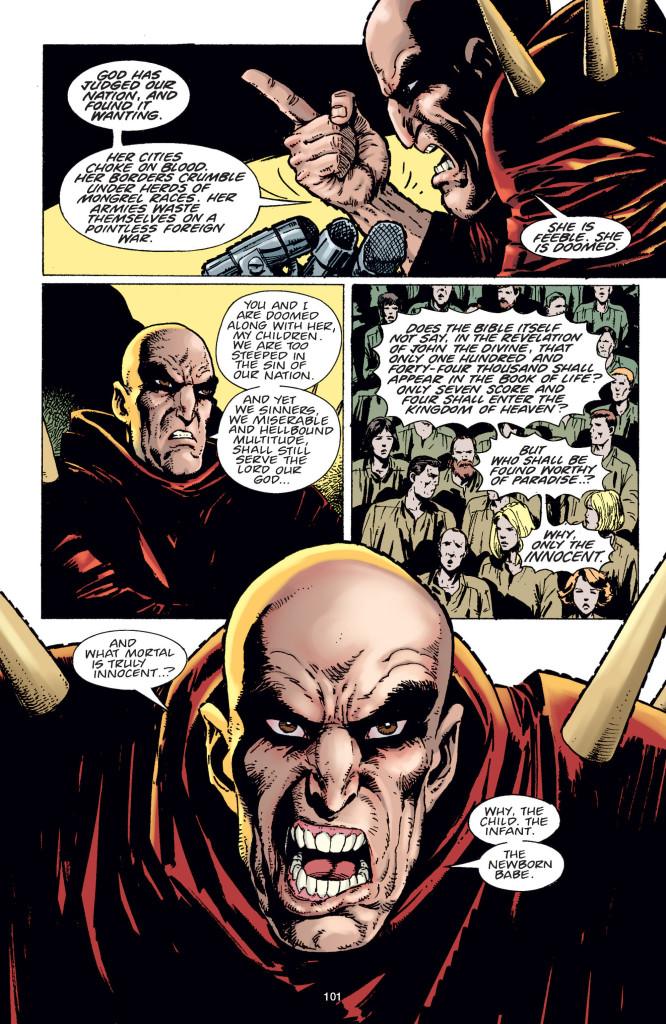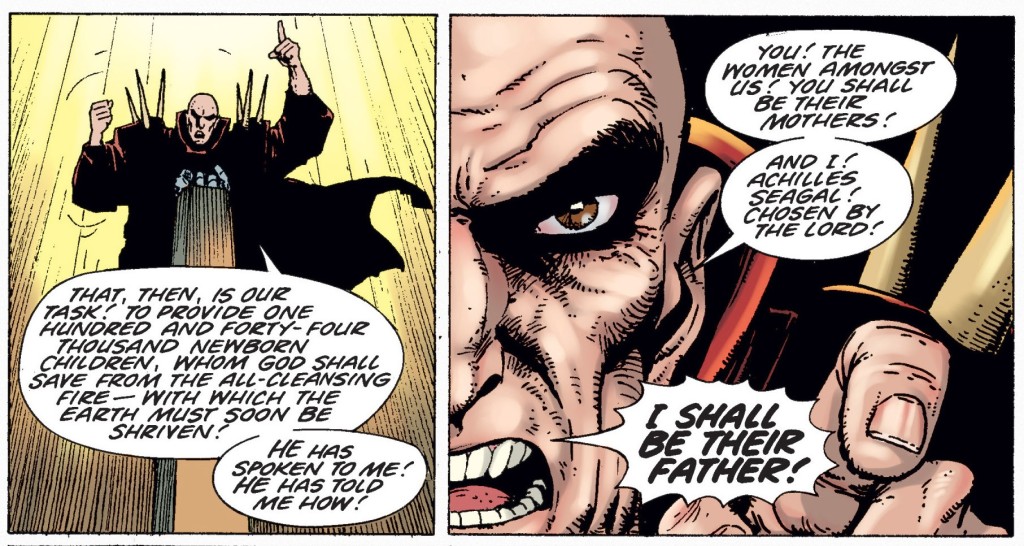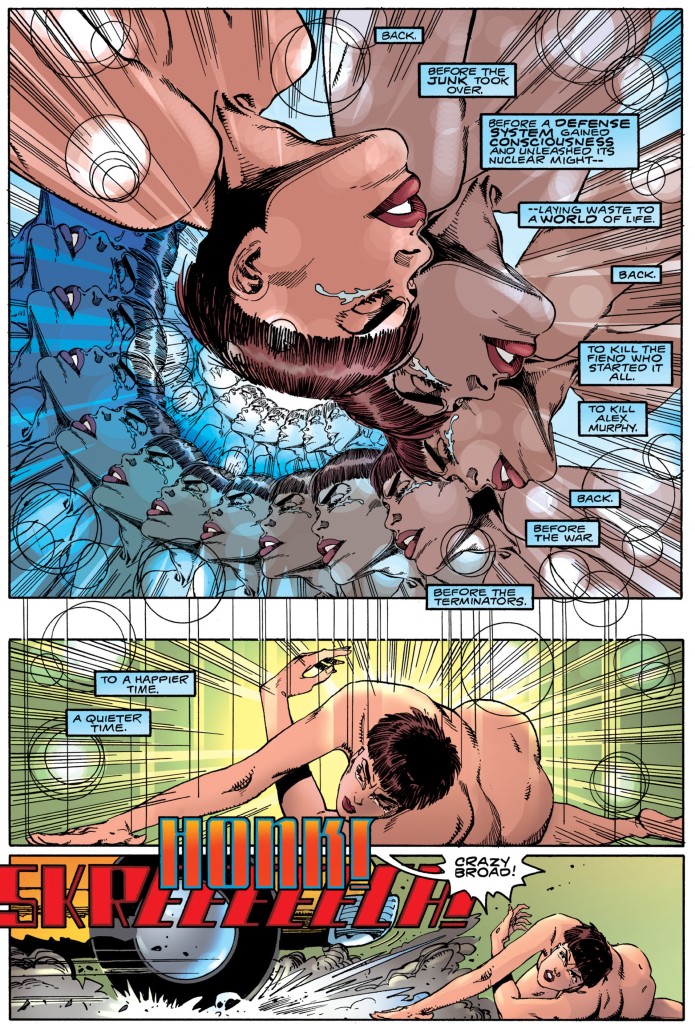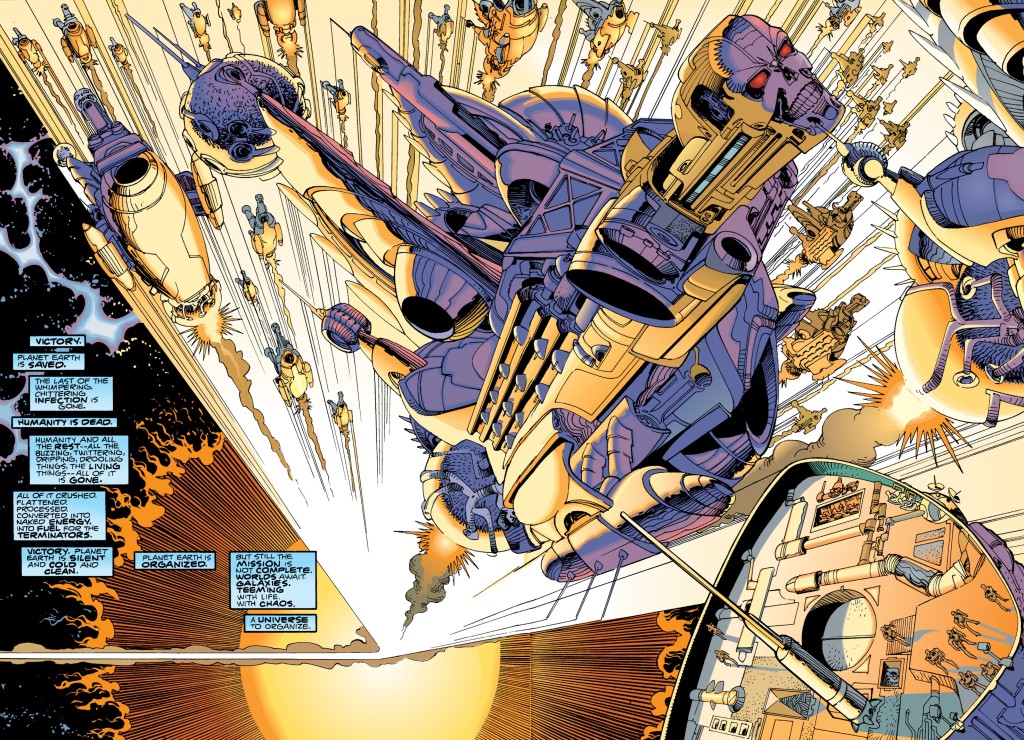Last month, I wrote about the remarkable ending of The League of Extraordinary Gentlemen, but that was not the only cool sci-fi/fantasy series to wrap up in 2019. Rick Remender’s and Matteo Scalera’s Black Science finished its blustery, dreamlike barrage of alternate dimensions (in which each individual panel seems ripped from one of those old illustrated mags full of surreal creatures and ray guns, like Tales of Wonder, Future Fiction, and Astounding Stories of Super-Science) with a denouement that lived up to its core theme of an ageing punk dealing with family responsibility. Likewise, Brian K. Vaughan’s and Cliff Chiang’s Paper Girls, one of the best things to come out of the ‘80s revival craze (alongside the awesome Netflix series GLOW), brought its coming-of-age adventure yarn about time-travelling teenagers to a bittersweet end.
Neither of these comics is as brilliant as LOEG, yet they’re both super-stylish, not least because of the spectacular work of colorists Dean White, Moreno Dinisio, Matt Wilson, and Dee Cunniffe. While also drawing on a number of intertextual references (like Paper Girls’ fun letter pages, framed as a publication from The American Newspaper Delivery Guild), the emphasis is on more mainstream entertainment – these are serpentine, adrenaline-charged page-turners that capture a more immediate sense of thrill, dynamically pushing readers along with non-stop cliffhangers, plot twists, and stunning splash pages.
This got me thinking about thrillers that take this approach even further… And since it has become a winter tradition here at Gotham Calling to do a yearly post about sci-fi war comics, I figured this time around I’d focus specifically on books that feel like trashy science fiction! Here are three series that, although derivative and problematic on many levels, do reflect an appealing sort of gusto, unashamedly reveling in ultra-violence and poor taste. They’re worth checking out if you’re looking for a quick shot of exploitation that turns the darkest corners of our world into grist for visceral excitement:
ANT WARS
This comic probably delivers everything you can expect from a science-gone-wrong story about mutated ants going on a killing spree in the Brazilian jungle. The giant insects are seemingly unstoppable, a bunch of people get eviscerated, and the stakes keep escalating. There are various artists (José Luis Ferrer, Alfonso Azpiri, Luis Bermejo, Lozano, and Peña), but they all stick to a consistent approach of depicting the ants in a realistic style, with predictably creepy results.
Even though the series was originally published in 1978 (in 2000 AD #71-85), its themes fit quite comfortably in this Jair Bolsonaro era of assault on the Amazon rainforest and on Brazil’s indigenous communities. On top of the obvious nature-fights-back-against-humanity motif, there is a riotously heavy-handed commentary on colonialism: while one of the protagonists – an arrogant officer called Captain Lobos Villa – often refers to a young native as a savage Indian who doesn’t understand civilization, the kid’s cultural background keeps saving his life. (Now that every comic seems to be on the way to the screen, I expect a film adaptation by the people who made Bacurau at any moment.)
That said, Ant Wars is still very much a product of its day. It feels cut straight from the cloth of the huge-animals-on-a-rampage horror subgenre trending in British pop culture at the time, not just in the form of novels like James Herbert’s The Rats and Guy N. Smith’s Night of the Crabs, but – above all – in the form of the outrageous environmentalist comics created by Pat Mills in retaliation against Jaws’ man-versus-nature theme (Hook Jaw, Shako, Flesh).
It’s also a clear throwback to American 1950s’ ‘killer bug’ movies like Them! and Tarantula. Villa sometimes resembles Charlton Heston, who played a similar racist character in 1954’s eerie gothic drama The Naked Jungle (whose climax involves an ant attack on a Brazilian plantation). Those films reflected early Cold War paranoia, including a deep-rooted fear of uncontrollable nuclear power and of an enemy that could not be reasoned with. Yet Ant Wars reflects a different context: published at a time when the Cold War had become much more global, it sets its sights on US imperialism in the Third World while also poking fun at anti-imperialism – once the story moves to Argentina (starting with the gratuitous slaughter of a couple of Scottish soccer fans who were there for the World Cup), the protagonists cross paths with a surprising caricature of Che Guevara:
Hell, you can read the whole ‘giant ant army’ thing as a chaotic allegory about the murderous, ruthless dictatorships cynically empowered by the United States in Latin America! (The bleak final pages, at least, lend themselves to this reading…)
Don’t get me wrong: I won’t pretend like Ant Wars was conceived as anything more than an unpretentious pulp adventure strip aimed at young boys or that writer Gerry Finley-Day was necessarily sensitive about some of his un-PC word choices (his narration uses the same terms as Captain Villa, which is not to say they aren’t soaked in venomous irony). Still, there is something anarchic about this comic that remains captivating – like much of early 2000 AD, it’s vicious, unsentimental, and even funny in a grotesque sort of way, brutally pitting unlikable characters against unspeakable threats and letting god sort them out.
BLOODY MARY
A couple of 2000 AD alumni were behind this nasty four-issue mini-series about a mission to find the ultimate weapon during World War III, headed by the weary American Corporal ‘Bloody Mary’ Malone and an overenthusiastic amnesiac British officer who just goes by the name of Major.
Originally published in 1996 as part of DC’s short-lived sci-fi imprint Helix, Bloody Mary’s imagined future feels both outdated (war started in 1999 and lasted until 2012) and like a topical parody of current trends, as a Franco-German-dominated European Union (true enough), whose leader had been ‘swept to power on a wave of racial hate and reactionary paranoia’ geared against immigrants (an increasingly believable scenario), fought against a Britain who refused to join the rest of the continent (which gels with Brexit, even if it doesn’t take into account Brexit’s own links to the rise of the far-right).
Like with Ant Wars, however, scrutinizing Bloody Mary’s politics and futurology too deeply risks missing the point. They’re just the framework for a gory action yarn done by a Garth Ennis who was still figuring out how to write war stories and a Carlos Ezquerra who had already made a healthy career out of drawing them. While there is plenty of grit and pathos along the way, the creators clearly didn’t take anything very seriously as they indulged in cartoony stereotypes like the brazenly jingoistic (and xenophobic) Major or a wine-obsessed French assassin whose final dying gesture is to pour the nearest bottle. And even though the comic, echoing previous conflicts, pits the UK and the US against European authoritarianism, it makes a point of clarifying that their main motivation is to regain control of the trade that Europe dominates.
The sequel, Lady Liberty, published the following year, is even more tongue-in-cheek, as New York City gets taken over by a horny cult leader:
It’s a 1990s’ Garth Ennis comic, which means it’s still a bit rough around the edges, but also stirringly full of piss and vinegar (and occasional jokes about Kurt Cobain). Ennis and Carlos Ezquerra make quite a team (no wonder they collaborated on so many comics…), especially as Ezquerra can pull off an appealing sort of ugliness that suits both the despicable characters (all of them bastards, to some degree) and the ensuing carnage. Ezquerra also expressively brings to life several lengthy conversations, helped by Ennis’ amusing way with words and by Annie Parkhouse’s vivid letters.
The fact that Mary keeps dressing up like a nun and shooting people brings to mind the ‘nuns with guns’ subgenre, which matches the overall grindhouse tone of the comic. Yet the main influences are indisputably the pulse-pounding movies of James Cameron and John Carpenter, with their badass leads and cyberpunk attitude.
ROBOCOP VERSUS THE TERMINATOR
Speaking of James Cameron: merging the RoboCop and Terminator franchises may seem like a no-brainer. The two film series share a flair for hypercharged violence as well as human-versus-technology themes. The premise that Alex Murphy’s RoboCop prototype kickstarted the chain that led to the Skynet machine rebellion creates a logical link that doesn’t require much retconning. Still, you could’ve ended up with little more than serviceable fanfic were it not for the fact that the team behind this crossover was made up of two giants of the medium near the peak of their careers. As a result, 1992’s mini-series RoboCop Versus the Terminator turned out to be worthy of both properties!
Just as Terminator fans will get a kick out of the relentless momentum and time-travelling paradoxes, the RoboCop crowd should appreciate Murphy’s characterization and the series’ signature black comedy (stay away if you can’t stand the sight of violence against children or dogs!), even if the tone comes across as more earnest than in Paul Verhoeven’s over-the-top satire. As fond as I am of those vicious Alan Grant comics in which RoboCop goes to war in Algeria, this is probably the greatest take on the material outside of the first couple of movies.
As for the title of greatest Terminator comic, it’s arguably a tie between this one and The Terminator: One Shot by James Robinson and Matt Wagner. Not that we really needed more than what we got with the first film sequel, Terminator 2: Judgment Day. By undoing the apocalyptic fatalism of its Reagan-era predecessor (‘There’s a storm coming.’) and – through the story of a woman who stops dreaming about nuclear holocaust – replacing it with a post-Cold War sense of open future (‘no fate but what we make’), T2 provided perfect closure to the saga, so anything after it just feels like gluttony.
Sure, the original Planet of the Apes also had a perfect ending, but at least there the sequels were genuinely weird and original… whereas with the Terminator franchise – from the campy Terminator 3: Rise of the Machines (which brought back paranoid pessimism in line with the War on Terror zeitgeist) to the most recent installment, the woke Dark Fate – we mostly got rehashed plotlines and a remix of the earlier movies’ greatest moments and lines (yes, this even goes for Terminator Salvation, which at least tried out a relatively different approach). In turn, RoboCop Versus the Terminator boldly expands the scope of both series while taking the narrative in unexpected directions.
More than the RoboCop/Terminator crossover, though, the comic is worth it for the Frank Miller/Walter Simonson team-up.
Frank Miller penned RoboCop Versus the Terminator with the kind of unbridled excess he brought to other Dark Horse comics at the time, like Give Me Liberty, Hard Boiled, and The Big Guy and Rusty the Boy Robot. He also nailed the various voices, clearly having a blast writing from the machines’ perspective. In particular, having already worked on the botched RoboCop 2 screenplay, Miller had a knack for the humorous potential of Alex Murphy’s no-frills approach to problem-solving (I love the gag with the suicide bomber).
Meanwhile, Walt Simonson took the chance to go wild as he piled up panels upon panels of robots mercilessly fighting each other, with the ensuing shrapnel and John Workman’s sound effects getting all over the place. Although Steve Oliff’s bright, clean computer coloring in 2014’s collected edition (as opposed to Rachelle Menashe’s more subdued colors in the original) doesn’t do justice to Simonson’s gritty artwork, the result is still a fever dream of sci-fi action. Recommended for anyone in the mood for some pure, unabashed schlock.

